J R Hutchinson
Anatomical and biomechanical traits of broiler chickens across ontogeny. Part II. Body segment inertial properties and muscle architecture of the pelvic limb
Hutchinson, J R; Paxton, H P; Codd, J; Rankin, J W; Tickle, P
Authors
H P Paxton
J Codd
J W Rankin
P Tickle
Abstract
In broiler chickens, genetic success for desired production traits is often shadowed by welfare concerns related to musculoskeletal health. Whilst these concerns are clear, a viable solution is still elusive. Part of the solution lies in knowing how anatomical changes in afflicted body systems that occur across ontogeny influence standing and moving. Here, to demonstrate these changes we quantify the segment inertial properties of the whole body, trunk (legs removed) and the right pelvic limb segments of five broilers at three different age groups across development. We also consider how muscle architecture (mass, fascicle length and other properties related to mechanics) changes for selected muscles of the pelvic limb. All broilers used had no observed lameness, but we document the limb pathologies identified post mortem, since these two factors do not always correlate, as shown here. The most common leg disorders, including bacterial chondronecrosis with osteomyelitis and rotational and angular deformities of the lower limb, were observed in chickens at all developmental stages. Whole limb morphology is not uniform relative to body size, with broilers obtaining large thighs and feet between four and six weeks of age. This implies that the energetic cost of swinging the limbs is markedly increased across this growth period, perhaps contributing to reduced activity levels. Hindlimb bone length does not change during this period, which may be advantageous for increased stability despite the increased energetic costs. Increased pectoral muscle growth appears to move the centre of mass cranio-dorsally in the last two weeks of growth. This has direct consequences for locomotion (potentially greater limb muscle stresses during standing and moving). Our study is the first to measure these changes in the musculoskeletal system across growth in chickens, and reveals how artificially selected changes of the morphology of the pectoral apparatus may cause deficits in locomotion.
Citation
Hutchinson, J. R., Paxton, H. P., Codd, J., Rankin, J. W., & Tickle, P. (2014). Anatomical and biomechanical traits of broiler chickens across ontogeny. Part II. Body segment inertial properties and muscle architecture of the pelvic limb. https://doi.org/10.7717/peerj.473
| Journal Article Type | Article |
|---|---|
| Acceptance Date | Jun 16, 2014 |
| Publication Date | Jul 3, 2014 |
| Deposit Date | Nov 11, 2014 |
| Publicly Available Date | Nov 11, 2014 |
| Journal | Peer J |
| Peer Reviewed | Peer Reviewed |
| Volume | 2 |
| Pages | e473 |
| DOI | https://doi.org/10.7717/peerj.473 |
| Public URL | https://rvc-repository.worktribe.com/output/1405311 |
| Additional Information | Corporate Creators : Manchester |
Files
8456.pdf
(1.9 Mb)
PDF
You might also like
The evolution of femoral morphology in giant non-avian theropod dinosaurs
(2024)
Journal Article
Estimation of the forces exerted on the limb long bones of a White Rhinoceros
(2024)
Journal Article
Downloadable Citations
About RVC Repository
Administrator e-mail: publicationsrepos@rvc.ac.uk
This application uses the following open-source libraries:
SheetJS Community Edition
Apache License Version 2.0 (http://www.apache.org/licenses/)
PDF.js
Apache License Version 2.0 (http://www.apache.org/licenses/)
Font Awesome
SIL OFL 1.1 (http://scripts.sil.org/OFL)
MIT License (http://opensource.org/licenses/mit-license.html)
CC BY 3.0 ( http://creativecommons.org/licenses/by/3.0/)
Powered by Worktribe © 2025
Advanced Search
